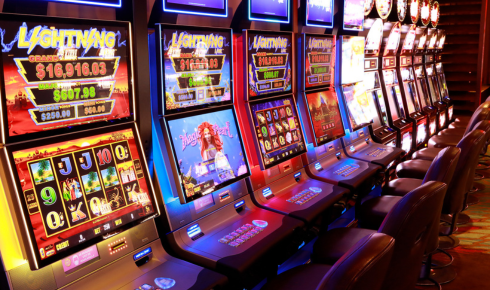What began as a hulking contraption in smoky bars has transformed into a sleek, digital phenomenon accessible with a single tap. The story of slot machines—those iconic symbols of chance and thrill—charts a journey not just through technology, but through shifting human desires. From mechanical levers to mobile-responsive reels, slots have come a long way. The metamorphosis is not just technical—it’s cultural, psychological, and deeply reflective of our need for instant interaction.
The term “one-armed bandit” wasn’t merely a colorful nickname—it captured the mechanical reality of early slots. You’d yank a lever, triggering a cascade of gears and cogs that spun physical reels. It was tactile, slow, and embedded in the soundscape of coins and clunky machinery. But despite their primitive design, these machines wielded a certain charm: raw, analog suspense paired with a dash of good fortune.
Fast forward a century, and we now encounter a vastly different animal. Today’s online slot games are visual feasts—hyper-responsive, narratively rich, and accessible on screens that fit in our palms. Platforms like pgvip89 have fully embraced this evolution, offering a kaleidoscope of themes that go far beyond fruit symbols and bars. Egyptian tombs, interstellar quests, mythic beasts, and cyberpunk cities—there’s a world behind every spin.
A major catalyst in this transformation was the birth of the Random Number Generator (RNG). It replaced mechanical unpredictability with a mathematically governed system of chance. With RNGs, game fairness became programmable, scalable, and secure. But more importantly, it laid the foundation for creativity: developers could now build complex features like cascading reels, bonus rounds, and expanding wilds—all powered by invisible math and code.
Then came mobile optimization. As smartphones became our default portals to digital life, the gambling world followed. One-click gameplay turned casual scrolling into high-stakes sessions. The modern slot isn’t about waiting; it’s about experiencing. Lightning-fast spins, swipe-based controls, and immersive sound design created a frictionless loop of reward anticipation. Brands like pgfly88 have capitalized on this trend by designing games that don’t just mimic traditional slots—they transcend them.
Gamification added yet another layer. Today’s slots are often framed as progressions. Players unlock levels, gather in-game currencies, participate in tournaments, and even personalize avatars. These features convert what was once passive gambling into an active, goal-driven experience. It’s a fusion of gaming and wagering that resonates especially with younger audiences raised on video games and apps.
But perhaps the most profound shift is the psychology embedded in modern slot design. Near misses, visual celebration of small wins, and dynamic difficulty curves are no accident. These are carefully engineered stimuli designed to prolong engagement and intensify emotional payoff. While the payout mechanics remain based on chance, the surrounding experience feels far more curated—and far more compelling.
In essence, the humble slot machine has gone from a solitary metal box in a casino corner to a globally accessible entertainment ecosystem. It reflects technological advancements, shifting societal habits, and our evolving relationship with risk and reward. The lever is gone, but the thrill has only sharpened.
As we peer into the future—AR slots, crypto-based wagers, decentralized casinos—it’s clear that this evolution is far from over. But one thing remains constant: the human appetite for that magical spin, that pulse-quickening moment when anything feels possible.





